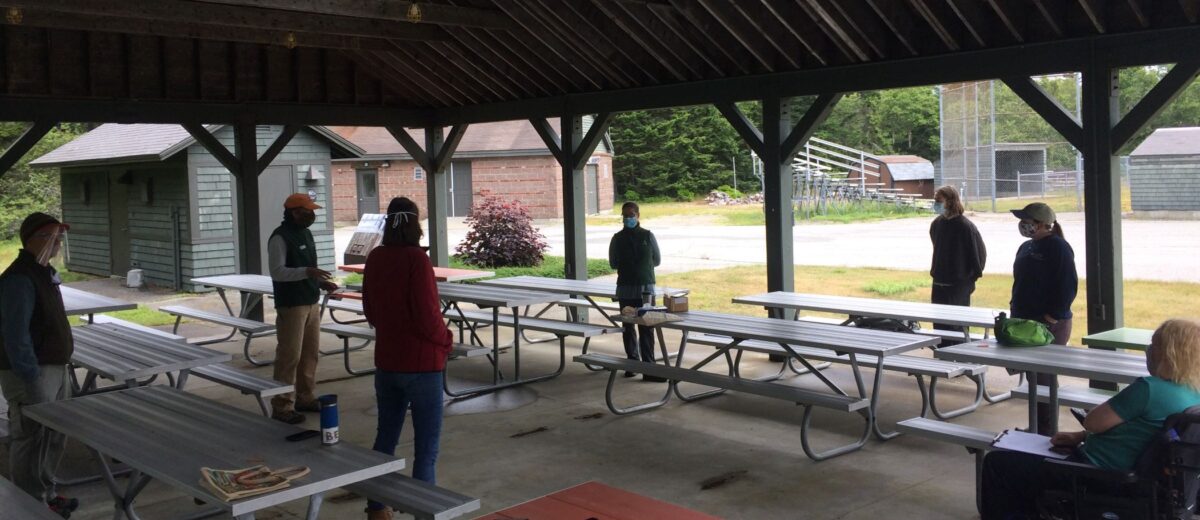The field season has begun! The Schoodic Institute Science & Education team welcomed two ecology technicians who started work on Monday. Hayes Henderson grew up in Pennsylvania and graduated from Colorado College with a degree in environmental science. Shannon O’Brien hails from Florida but came to Schoodic from the University of Maine, where she completed her bachelor’s degree in ecology and environmental science.
After necessary quarantines and other Covid-19 related preparations, the technicians met with the team on Monday for an introduction to the field season. Some of the projects they will be assisting with include Cadillac Mountain restoration, biodiversity work for Wild Acadia in partnership with Friends of Acadia, monitoring Future Forests of Coastal Maine and Common Campus tree plots, rockweed research, and Sea Watch and Hawk Watch counts later in the season. In addition to using the platform iNaturalist and Nature’s Notebook for some of this work, Hayes and Shannon also will be analyzing historic iNaturalist data and identifying potential questions for future citizen science projects.
Lydia Horne, an intern from the University of Maine, will be helping the team develop programming that integrates our research and monitoring work into experiential learning opportunities. This effort is supported by a generous grant from the Onion Foundation. Lydia is part of the Advancing Conservation Science and Practice National Science Foundation (NSF) funded research traineeship program, which Schoodic Institute as a partner.
Meanwhile, Second Century Stewardship fellows are hard at work.
Jay Wason set out on July 3 to locate six sites in Acadia National Park used by Ronald Davis in his authoritative study of Maine’s coastal spruce forests in 1959. Says Jay, “We found them all! They were really interesting with diverse structure and composition. Saw some really nice big old spruce trees on Bernard Mountain and lots of downed woody debris.” He and Shawn Fraver will be back later this summer to count, monitor, and measure vegetation in the 100-square-meter plots.
Another 2020 fellow, Bonnie Newsom, and two student assistants will be meeting with members of the Abbe Museum’s archaeological advisory committee which includes representatives from Maine’s tribal communities, the Abbe Museum, the National Park Service, and others. This outreach activity will help the team to identify stakeholder questions and interests regarding archaeology sites and data.
Matt Farragher, a UMaine graduate student advised by Jasmine Saros, is helping 2020 fellow Rachel Fowler with lake and pond water sampling on Mount Desert Island.
Steph Spera, 2019 fellow, has a student analyzing data this summer, and she is still searching for old (pre-2000) photographs of Acadia in the fall, as well as the State of Maine official “Fall Foliage Reports” that began appearing in newspapers in 1959 (anyone have a pile of these in their garage?). Closures of libraries and archives have affected this historical research, but Spera hopes that people going through old photos as part of “pandemic projects” may have found vacation photos of Acadia in the fall.
Kate Ruskin has shifted her research. Instead of intercepting people in person, she and students Andrea Knapp and Dominique DiSpirito posted signs at several locations directing visitors to a survey about management of Acadia’s lakes, ponds, and streams.
